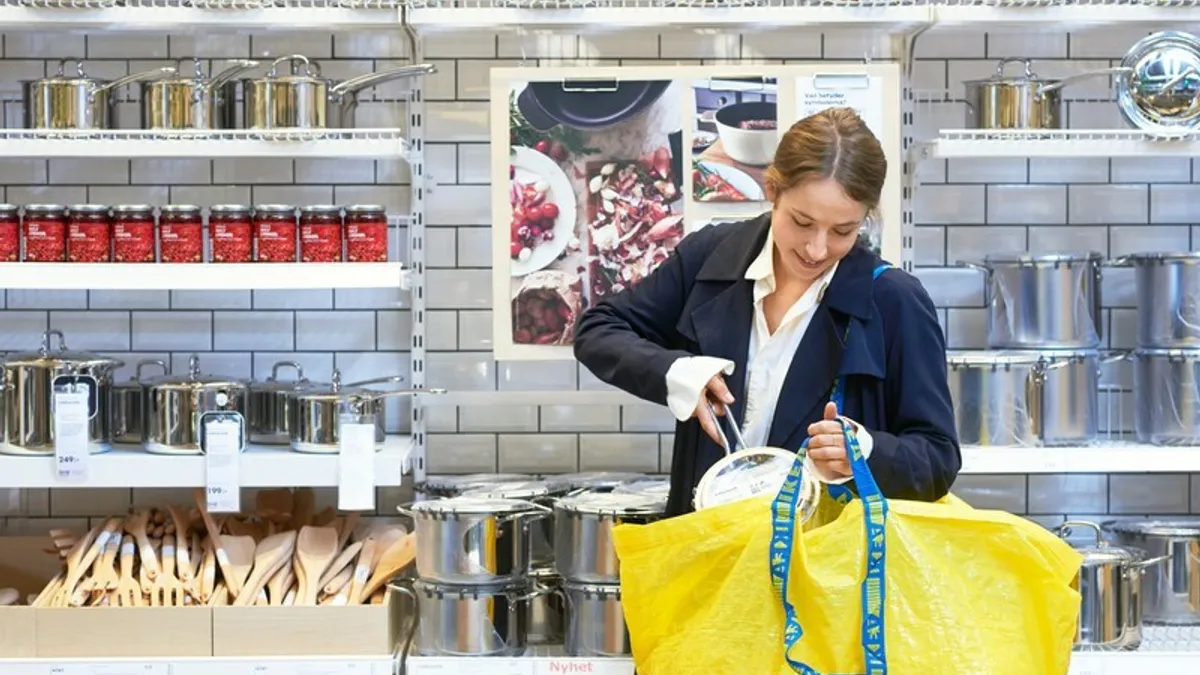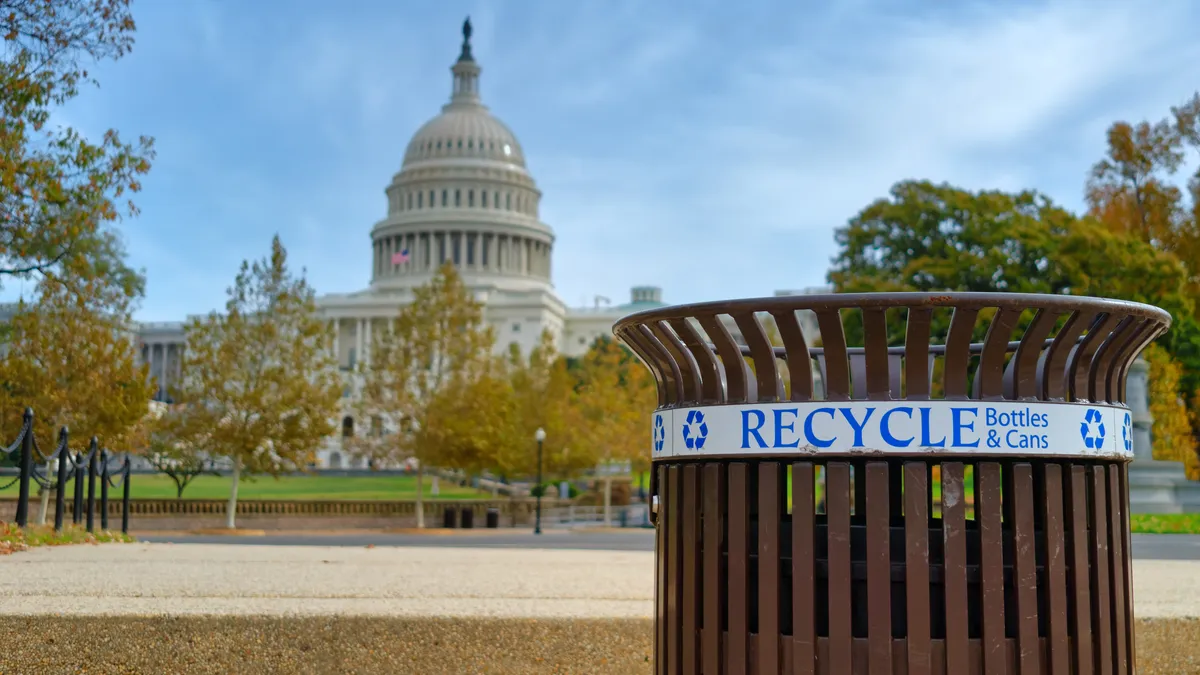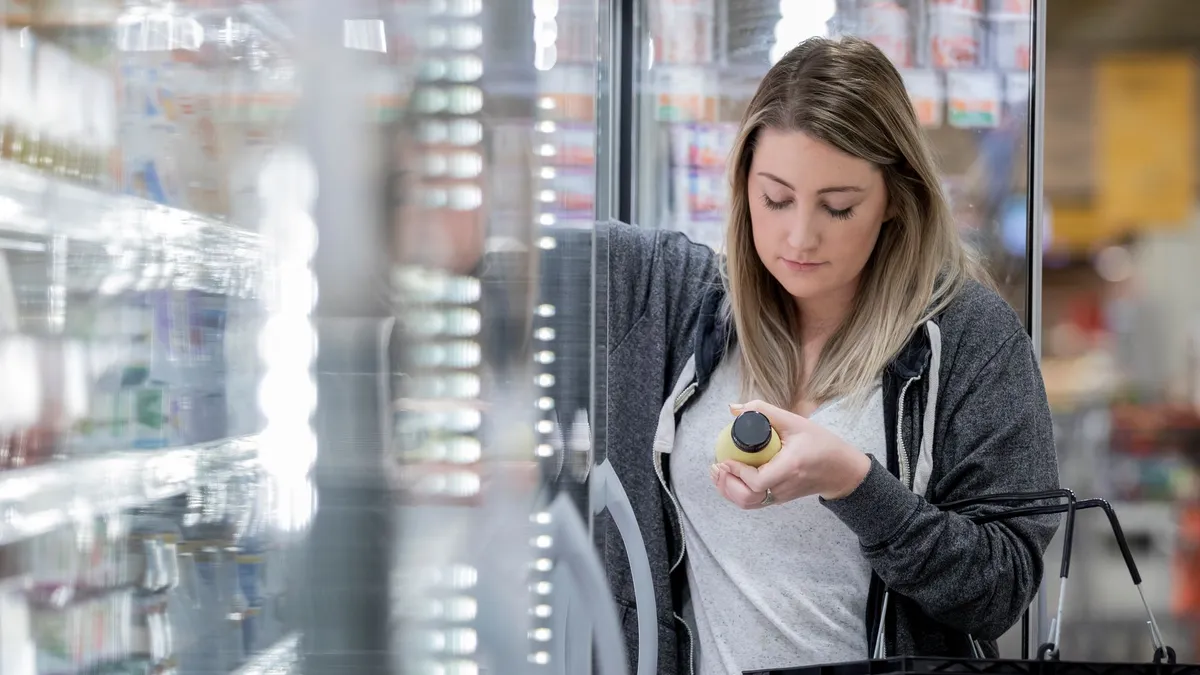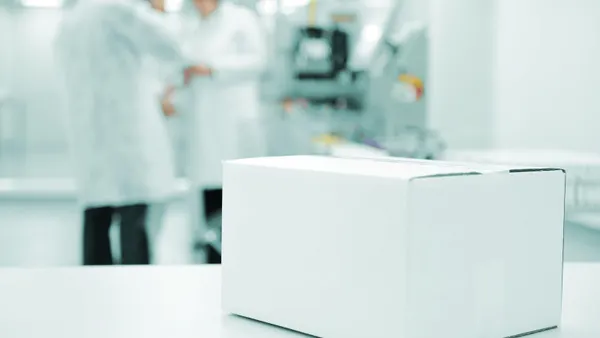Ikea reduced plastic packaging of consumer goods by 47% in the two years since the Swedish-founded home goods giant committed to phasing out single-use plastic in such packaging by 2028. That progress has been precipitated by shifting focus to paper or fiber-based alternatives.
The company, known for its moderately priced furniture items and home basics, shared updated figures in its sustainability and climate reports for financial year 2023 last week. Packaging is just one piece of what the company, which collaborates with the Ellen MacArthur Foundation, says is its aim to become a more circular business, which includes goals to reduce waste and reuse and refurbish more products.
At the time that Ikea set the goal to eliminate plastic packaging, it was a relatively small gap to close: less than 10% of its total annual volume of packaging material consisted of plastics, the company said.
“Phasing out plastic in consumer packaging is the next big step on our journey to make packaging solutions more sustainable and support the overall commitment to reduce plastic pollution and develop packaging from renewable and recycled materials. The shift will happen progressively over the coming years, and mainly be focusing on paper as it is both recyclable, renewable, and widely recycled across the world,” said Erik Olsen, packaging and identification manager at Ikea of Sweden, in the 2021 announcement.
One example that the company highlighted at the time was switching from PET plastic coverings for Ikea blinds to corrugated or cardboard packs, part of a broader transition in packaging for textiles.
When considering total plastic packaging — consumer packs and multipacks as well as unit loads and handling materials — the reduction was 44% between FY21 and FY23.
Ikea’s efforts come as the brand expands in the United States. In 2023, the company announced it would invest more than $2.2 billion over the next three years to open stores and strengthen its fulfillment network in the U.S. Some brands and retailers have struggled with a reverse trend — packaging weight or virgin plastic use increasing — in tandem with business growth.
Furniture and home goods are some of the products for which packaging’s protective qualities are most critical, but where companies still want to avoid excessive weight and waste. Ikea says flat packs have been an important part of its strategy; the company says they’ve been essential for lowering prices and enabling greater inventory in each store. Back in 2016, Ikea reported that it had replaced the use of expanded polystyrene foam in flat packs with corrugated and molded paper, leveraging a honeycomb design. In 2021, the company said it was looking for alternative material startups that could displace cardboard in the flat packs of the future.
Ikea’s climate report details its current approach to plastics — both those used in packaging and products. To reduce plastics’ footprint, the company is focused on maximizing mechanically recycled plastics, using “mass-balanced” chemically recycled PP and adopting new technologies and feedstock sources. For products, the company said challenges include securing affordable feedstock and determining the climate footprint of “renewable plastics, which is highly dependent on the type of feedstock, management practices, production location and process steps,” the company wrote.
Packaging materials that get recycled are also providing recycled content for some Ikea products. For example, in FY23 Ikea launched a recycled glass worktop range, replacing virgin quartz, sourcing material in part from wine bottles, glass jars and containers.
Food packaging is also a concern for the retailer, as shoppers can dine in store. The company said that in FY23 it made progress toward all food packaging being made from recycled materials by 2025 with the launch of 99% recycled PET bottles. The company also said it initiated projects to move to recyclable packaging for sauces and jams in Ikea restaurants. The company said “plastic packaging might remain in some parts of the IKEA food range where it is needed to secure quality and food safety standards beyond 2028, in which case it will come from renewable or recycled sources.”
The company highlighted work last year in Germany in partnership with Recup and Rebowl as a reusable takeaway option at the Ikea Bistro. “The cups and bowls can be reused or returned for a refund either on-site at the IKEA store or in any of the 12,000 partnered retail locations across Germany. This saves both resources (single-use cups and packaging) and operational costs,” the company said in the sustainability report.















